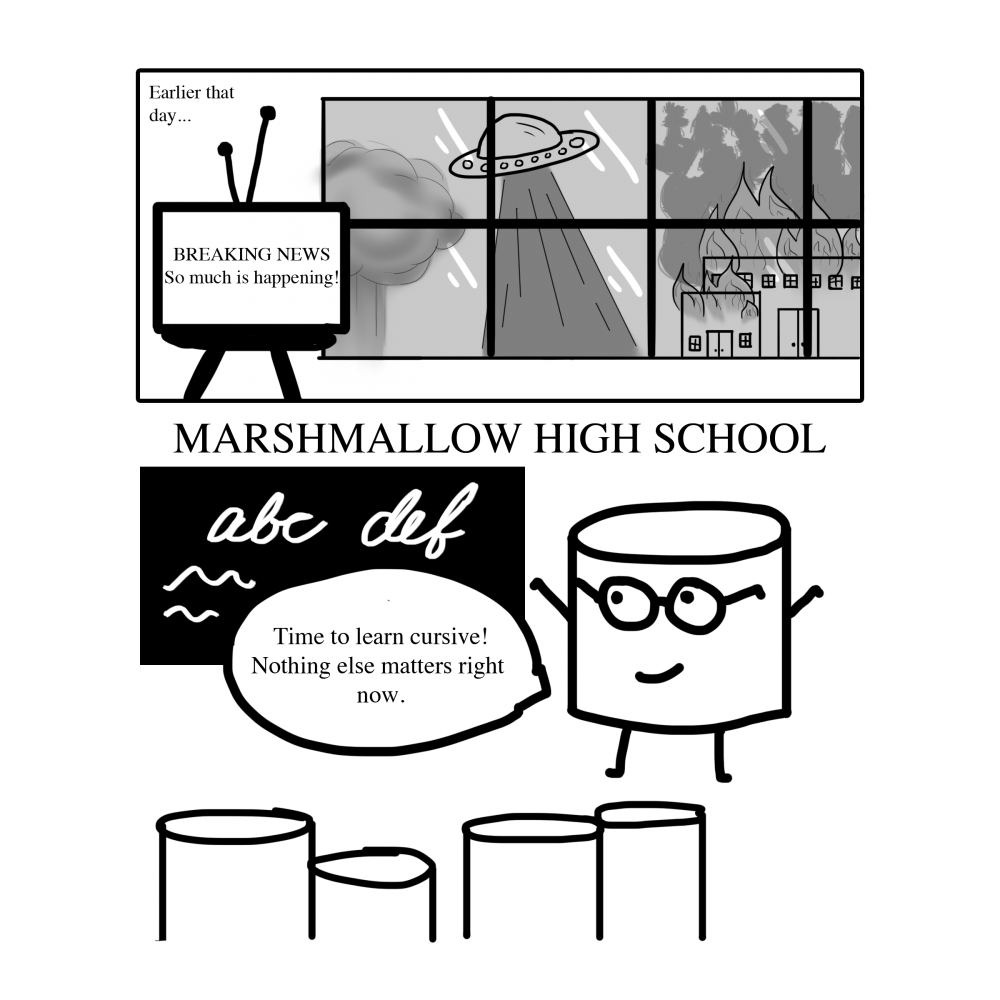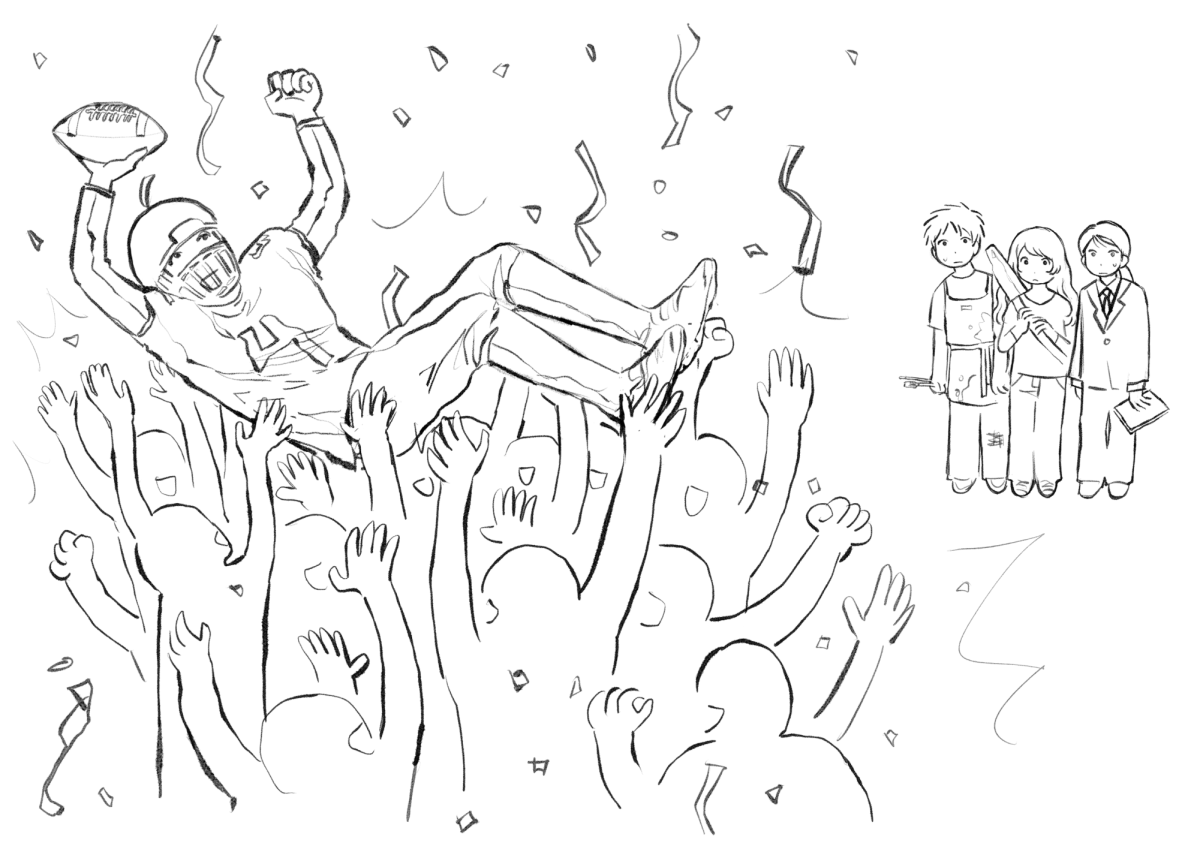Cursive curriculum reasonable in elementary school, ridiculous in high school
May 22, 2017
A recent school funding bill passed by the Illinois House on April 26 will require students to learn cursive in elementary and high school. The CT as a whole believes this requirement is reasonable for elementary school students but not for high school students, although there is some dissent on this viewpoint.
When the CT staff was in elementary school, students were required to learn cursive as part of the elementary school curriculum. Thus, the entire CT staff learned cursive in elementary school.
But as technology use skyrocketed, schools began to slowly pull cursive out of the classrooms. As of now, the district has eliminated cursive from the elementary school curriculum, replacing it with technology use.
The CT recognizes that people do not handwrite as often as they used to because we now type much of our work. Some staff members believe this makes cursive irrelevant. But, the majority of CT still believes that proper handwriting is a skill that students should continue to learn, as it will be useful throughout life.
Although, by that argument, shouldn’t students just learn how to write in print properly?
While the CT acknowledges that yes, teaching print writing is chiefly important and many students don’t write in the cursive that they were taught in school, most still write in a version of cursive.Cursive is defined as writing that is joined. By that definition, almost everyone writes in some form of cursive.
Cursive not only makes their writing neater, but that it is also an art form of its own. Learning to read cursive is also a lifelong skill that students need, and there is no way to learn it without learning cursive.
One reason cursive used to be taught to children is because it is easier. When writing cursive, one doesn’t have to pick up his or her writing utensils after writing just a letter, which makes writing faster and therefore, more efficient.
And, as many members of staff pointed out, cursive is aesthetically pleasing. The loops and curves of the letters are much more artistic than print. Supporters of cursive went so far as to call it an “art form” of its own. So, from an artistic standpoint, cursive is much more appealing than print.
Cursive also allows students to create their own handwriting. The definition of cursive is vague for a reason. Just like when they decide how to draw or paint, students are free to decide how to write in cursive, as long as the letters are connected. This freedom of interpretation helps foster creativity in students.
Finally, many historical documents, like the Constitution, were written in cursive. A part of deciphering such documents is reading them.
Currently, the older generation of our parents and grandparents still write in cursive so we can ask our them to tell us what a letter written in cursive says. But forty or fifty years from now, if we still don’t know how to read cursive, then we may lose a part of our past.
Although the CT staff does believe that it is necessary to learn cursive, we do not believe that it is necessary to implement cursive into the high school curriculum.
Students should learn how to write in cursive in elementary school, and it should be reinforced in middle school. By the time students are of high school age, they should have a grasp of cursive, and can review it on their own if they need to.
Overall, the CT believes that cursive is an irreplaceable part of the curriculum, but should be taught to elementary age students, not retaught to high schoolers.









Kate Gladstone • Aug 10, 2019 at 9:33 pm
Handwriting matters: does cursive matter? Research shows that legible cursive writing averages no faster than printed handwriting of equal or greater legibility. (Sources for all research are available on request.)
The fastest, clearest handwriters avoid cursive: though they aren’t print-writers either. Highest speed and highest legibility in handwriting are attained by those who join only some letters, not all: joining only the most easily joined letter-combinations, leaving the rest unjoined, and using print-like shapes for letters whose printed and cursive shapes disagree. Looping your p’s and g’s may please your teacher — if your teacher values loopiness over legibility and overall performance.
Reading cursive still matters — but reading cursive is much easier and quicker to master than writing the same way too. Reading cursive, simply reading it, can be taught in just 30 to 60 minutes — even to five- or six-year-olds —once they read ordinary print.
Educated adults increasingly quit cursive. In 2012, handwriting teachers across North America were surveyed at a conference hosted by Zaner-Bloser, a publisher of cursive textbooks. Only 37% wrote in cursive; another 8% printed. The majority — 55% — wrote with some elements resembling print-writing, others resembling cursive.
Cursive’s cheerleaders repeatedly claim the support of research — citing studies that invariably prove to have been misquoted or otherwise misrepresented by the claimant. The usual form of misrepresentation is to take the abundant research that shows important benefits for handwriting in any of its forms (including printing) and to claim falsely that those advantages are limited to cursive.
(By the way, students who live where schools have mandated cursive for years or decades don’t turn out any smarter or more skillful — in academics or in fine-motor graces — than students living anywhere else.)
What about cursive and signatures? Brace yourself: cursive signatures have no special legal validity over any other kind. (Hard to believe? Ask any member of the legal profession!)
Questioned document examiners (specialists in the identification of signatures, the verification of documents, etc.) inform me that the least forgeable signatures are the plainest. Most cursive signatures are loose scrawls: the rest, if they follow the rules of cursive at all, are fairly complicated: these make a forger’s life easy.
All handwriting, not just cursive, is individual — just as all handwriting involves fine motor skills. That is why any first-grade teacher can immediately identify (from the print-writing on unsigned work) which of 25 or 30 students produced it.
Demanding cursive in order to save handwriting is like demanding stovepipe hats and crinolines in order to save clothing.
Yours for better letters,
Kate Gladstone
DIRECTOR, the World Handwriting Contest
CEO, Handwriting Repair/Handwriting That Works
http://www.HandwritingThatWorks.com
[email protected]